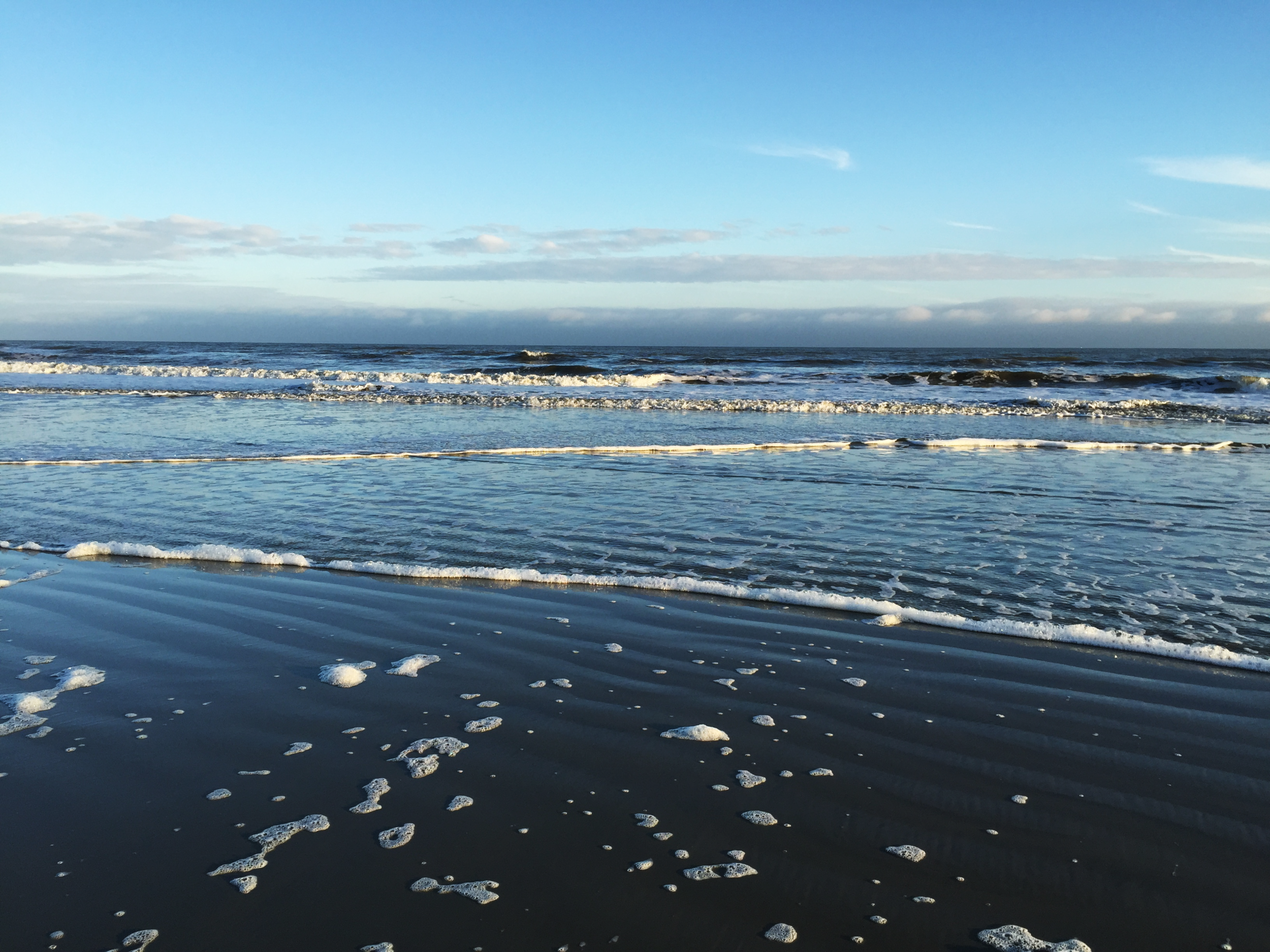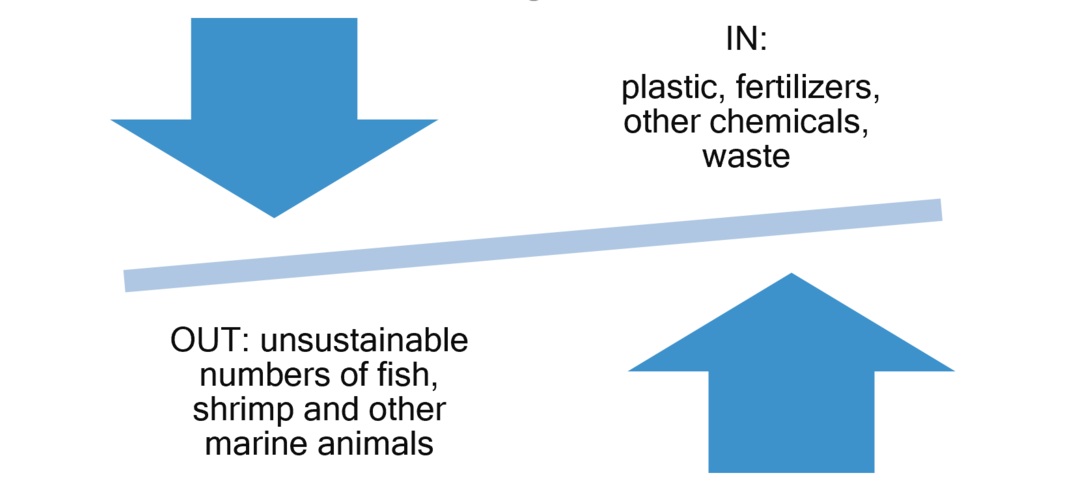Animals
Marine Life is Eating Plastic
A recent study in the Amazon Basin inspected the stomach contents of 172 fish and found one-quarter contained plastic pieces ranging from 1 – 15 mm in length faunalytics.org. Another recent global study found 100% of turtles had plastic or microplastics in their digestive systems ecowatch.com
Food
2019: Year of the Vegan?
When widely respected publications such as: The Economist, The Guardian and Macleans, pose the question, it seems there must be something going on. British charity, Veganuary, reports 250,000 people signed up to try a plant-based diet for January compared with 3,300 in 2014.
Climate Change
Oceans Under Threat
Oceans occupy 71% of the Earth’s surface, produce up to 80% of our oxygen, and absorb approximately 30% of the CO2 we release into the atmosphere each year onegreenplanet.org. Yet the crucial role they play in the global carbon cycle is now under threat due to global warming, over-fishing and pollution.
speaking words of wisdom
“Only if we understand can we care. Only if we care can we help.”
– Dr. Jane Goodall, legendary ethologist and environmentalist
“Our society’s addiction to throw-away plastic is fueling a global environmental crisis ...”
– Louise Edge, Ocean Campaign Coordinator, Greenpeace
Photo: Baltimore Oriole, Planet Friendly News
“We’ve got 10 years to save the seas”
This was the headline of a December report that the Edinburgh-based, environmental charity, “Global Oceanic Environmental Survey” (GOES), had advised that unless drastic action is taken to stop pollution and plastic waste from being dumped into the seas, the entire marine ecosystem could collapse within 25 years. The only way to avoid planetary disaster is to effect change now. Dr. Howard Dryden, Chief Scientific Officer, warned, “We need to stop using plastic or allowing it or other chemical pollutants to enter the eco system”. GOES estimates: 90% of the world’s coral will be dead by 2030; and, by 2045, acidity levels will be sufficiently high to trigger a cascade collapse which will wipe out most fish, birds, and sea mammals within five years. As it is, the number of whales, seals and seabirds will start to crash over the next seven years. express.co.uk
ON THE HORIZON
“WALLS OF DEATH” WILL SOON BE A THING OF THE PAST
After a four-year phase out, California has banned the use of large-mesh drift nets off its coast. Already banned by many countries, these so-called “walls of death” are over a mile-long and hang 100 feet into the ocean, indiscriminately trapping many endangered and protected species. More than 50% of the fish caught are discarded as “bycatch” (of which more than 90% die. “Eating Earth” by Lisa Kemmerer). Examples of animals ensnared include: whales; sea lions; dolphins; sea birds; and leatherback turtles. The ban will save thousands of animals a year. Compassionate Living, mercyforanimals.org.
clean up your beach by removing these top 10 items
1. Cigarette filters with plastic fibres.
2. Foam take-out containers.
3. Lids.
4. Plastic take-out containers.
5. Straws and stirrers.
6. Plastic bags.
7. Bottle caps.
8. Beverage bottles.
9. Food wrappers.
Photo: Planet Friendly News
A plastic tsunami
Data Points
We dump an estimated 8.8 million tons per year of plastic into the ocean, equal to five grocery bags full for every foot of coastline in 192 countries. [Jambeck Research Group, University of Georgia]
According to one study, just 9.5% of all plastic produced since 1950 has been recycled. The rest has been incinerated or has ended up in landfills and the natural environment. [Jambeck]
More than one-half of the oceans’ microplastics (measured by weight), is fishing-related. So-called Ghost Gear (lost or discarded fishing equipment), is one of the biggest threats to marine animals. Up to 92% of their encounters with debris, including Ghost Gear, involve plastic. worldanimalprotection.org
Banning plastic straws won’t do
They make up only a tiny fraction of the plastic that ends up in the ocean e.g., 46% of the plastic waste in the Great Pacific Garbage Patch is made up of fishing nets.
Also, recycling rates remain low (especially in the developing world) but even this is not a panacea. We need reusable packaging options e.g., metal, glass. nbcnews.com
Some Good news
EU parliament has banned single-use plastics as of 2021.
By end of 2018, 32 countries had banned plastic bags.
China reports 66% decline in plastic bag usage since ban in 2008. [WWF]
India says will ban plastic bags by 2022.
140 nations have agreed to negotiate a “Paris agreement for the Ocean”. It would be first international treaty to stop over-fishing and protect marine life. [NatGeo]
Spain plans to create wildlife reserve for migrations of whales and dolphins in Mediterranean and prohibit future fossil fuel exploration there. [AP]
“Future Crunch”, medium.com
PERSPECTIVE
The Coming Food Revolution
Our January issue highlighted “clean meat” but what about fish? According to some estimates, humans kill 2.7 trillion marine animals a year, and the number of fish and other aquatic animals in the oceans dropped by 49% between 1970 and 2012 Compassionate Living, mercyforanimals.org. Despite these staggering numbers, there’s some good news. Mirroring what’s going on in the clean meat space, companies are not only developing plant-based versions of tuna, salmon, shrimp and crab, but “cellular aquaculture” which uses fish cells to produce various sea foods that will be indistinguishable from those caught in the sea. The latter is still a few years away (watch for companies like Finless Foods and Blue Nalu), but plant-based versions are already here from Gardein, Good Catch, Ocean Hugger and New Wave Foods who are poised to disrupt the $120 billion seafood industry. Imagine, fish without mercury, plastic, PCBs and other chemicals not to mention eliminating the suffering of trillions of creatures. To learn more, see: “Seaspiracy” below.
sources of inspiration (even small actions make a difference)
Documentaries
“Seaspiracy”. This 14-minute video brought to you by “The Friendly Activist” can be seen on You Tube. It highlights the ecologically-devastating effects of the unsustainable fishing practices being undertaken by humanity, and shows that this damage is interconnected with the livestock industry.
“The Game Changers”, this film produced by Oscar-winning director, James Cameron, stars elite athletes – including Lewis Hamilton and players from The Tennessee Titans -- who demonstrate the power of plant-based eating. It’s due to be released early in 2019. Go to gamechangersmovie.com to catch the trailer.
Books
A new book by Dr. Neal Barnard (founder of the respected Physicians Committee for Responsible Medicine), “The Vegan Starter Kit”, is recommended by James Cameron for anyone who is “vegan-curious”.
“Eat for the Planet; Saving the world one bite at a time”, Nil Zacharias and Gene Stone. By making even small dietary changes, anyone can have a positive impact on our planet.
Websites
For recipes: TryVeg.com
For where to get protein: Mindbodygreen.com by Dr. Will Cole
THE DEEPER DIVE
Photo: Planet Friendly News
THE CHALLENGE
“Why is Our Concern about Climate Change so Small Relative to the Threat?”
The above question headlined an article in theglobeandmail.com (Dec 22, 2018), by Dan Gardner, author of, “Risk: The Science and Politics of Fear”. The explanation of the mismatch between the size of the threat of climate change and our relative lack of concern lies in the way we think. We fail to react to this type of issue because it seems too big and too remote. Here is a brief summary of the article.
THE RESPONSE
Psychologists describe two systems in our brain. System 1 -- the decision-making system -- is capable of understanding danger but it is incapable of ringing the alarm bell. This action falls to System 2, but System 2 cannot grasp the threat of a seemingly far off danger like climate change because it was shaped by a world that existed thousands of years ago when threats were typically immediate. It turns out, “our past endangers our future”. Global warming and the climate crisis are too big and remote for the alarm system in our brain to grasp. To precipitate action, System 1 needs to feel what System 2 calculates. How can we make that happen? The key is for scientists and others communicating the threat posed by climate change, to break it down and translate the dangers in a concrete, detailed, vivid and visceral way.
Make images more immediate and meaningful e.g., instead of “rising sea levels”, show the disappearance of beloved beaches e.g., the red sand beaches of Prince Edward Island.
Instead of “future generations”, illustrate them with names or a photo of a person.
Instead of “global temperatures”, talk about the dangerous health impacts of sweltering heat.
IF OUR FOOD had A green label
We’d be more likely to make dietary choices that benefit the environment.
Changing our diets is now recognized as one of the most powerful ways we can reduce our carbon footprint. Animal agriculture is the second leading cause of GHG emissions (just behind fossil fuels), and produces more GHGs than all transportation globally combined. However, in a recent study (Nature Climate Change, nature.org), consumers consistently under-estimated the GHG impact and energy consumption of 19 different food products – especially red meat. This means the, “typical consumer is unaware of the benefits … (of) … shifting away from high energy, high GHG-emitting options,” the researchers say. Given the option of cans of beef or cans of vegetables – each with a label displaying its environmental impact – participants bought 10 x more vegetables. The findings demonstrate the power of awareness to shift diets in an environmentally-beneficial way.
Researchers said the impact of food emissions from fertilizers and the consequences of deforestation and transportation, “are part of a long, invisible trail that we don’t see or consider”, when choosing what goes on our plates. “The choices we make at the dinner table can have a significant impact on global challenges such as climate change … our research shows consumers are keen to make that choice”. “Anthropocene”, published by futureearth.org
A double whammy for the oceans
Little wonder our oceans are in a state of collapse





